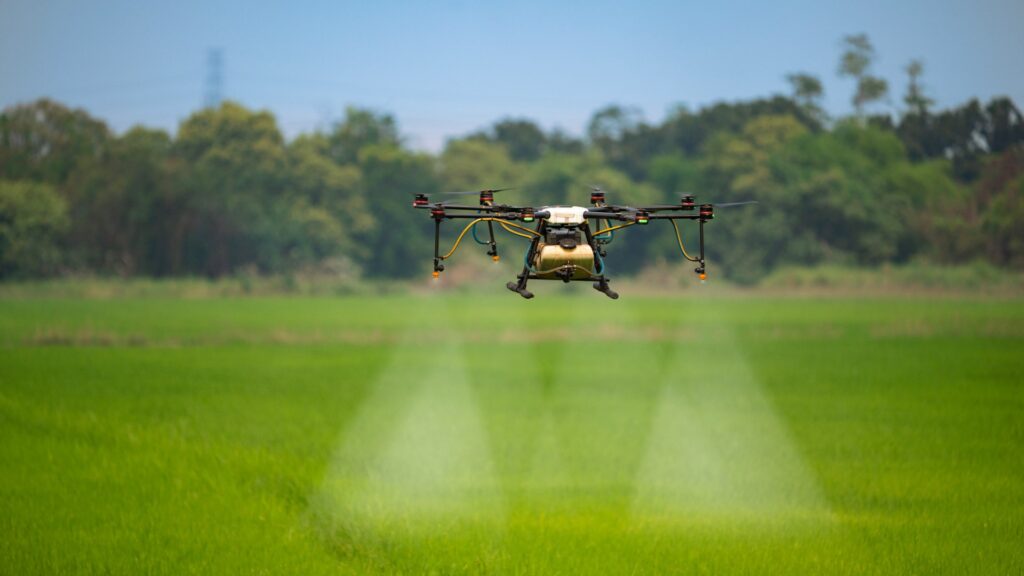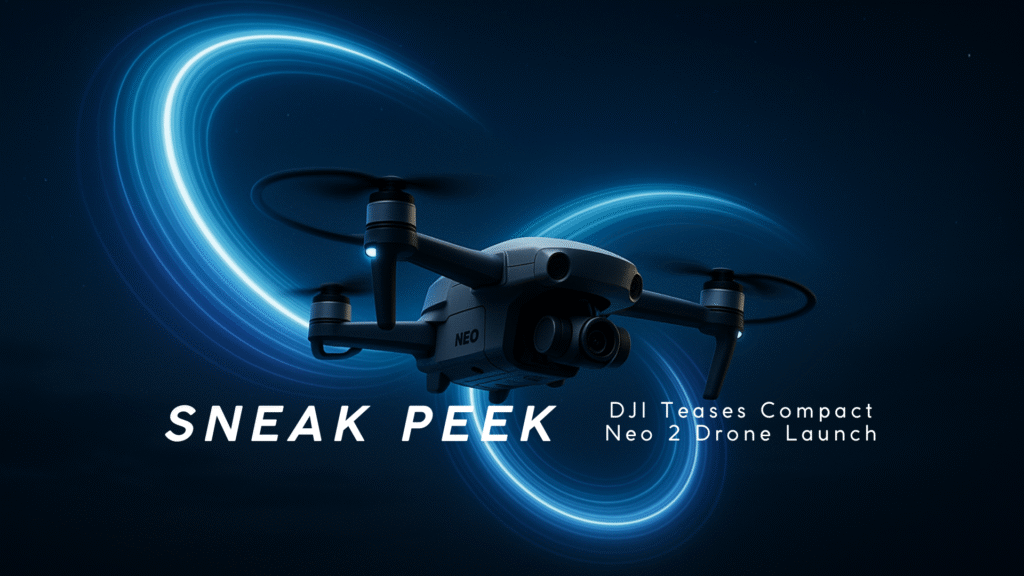Upgrading the Sky: What Sets DJI Neo 2 Apart from the Original Neo?
The DJI Neo set a benchmark as an ultra-lightweight, beginner-friendly drone with solid 4K video capabilities and intelligent flight modes. The DJI Neo 2, rumored to launch soon, builds on this foundation with noticeable upgrades in camera, flight time, speed, and AI intelligence, making it a tempting option for users looking to upgrade or start fresh. Both drones weigh 135 grams, making them highly portable and regulation-friendly for personal use.
The DJI Neo 2 builds on the foundation of the original while integrating significant upgrades that push aerial photography and flight to new heights. From enhanced camera sensors capable of recording smoother 4K footage at double the frame rate, to intelligent flight systems that make flying safer and more intuitive, the Neo 2 represents a meaningful evolution.
Camera and Imaging: Bridging Innovation and Creativity
One of the most compelling reasons to compare the DJI Neo and Neo 2 drones is the leap forward in camera technology. The original DJI Neo established a strong foothold as a compact drone delivering solid imaging capabilities with a 1/2-inch CMOS sensor, capable of recording 4K video at 30 frames per second and capturing 12-megapixel photos. This setup was well-suited for casual users and beginners who wanted high-quality footage without the bulk or complexity of pro-grade drones.
The Neo 2, however, significantly raises the bar. It sports a larger 1/1.3-inch CMOS sensor that offers 13.5 stops of dynamic range, drastically improving low-light performance and capturing richer details. Video recording capabilities jump to 4K at 60fps, alongside 10-bit HDR and D-Log M color profiles, which are highly valued by creative users who want extensive color grading options in post-production. The DJI Neo 2 also incorporates a 2-axis mechanical gimbal with advanced stabilization features such as RockSteady and Horizon Balancing for much smoother and stable footage even during dynamic maneuvers.
Additionally, the Neo 2 doubles down on storage and shooting flexibility, featuring 22GB of built-in memory and faster burst modes for photos, while the DJI Neo sticks to basic photo and video storage needs. These improvements mean that content creators, vloggers, and aerial photographers can push creative boundaries with richer colors, slower cinematic footage, and sharper images.
Here’s a quick comparison table of their core camera specs:
| Feature | DJI Neo | DJI Neo 2 | Upgrade Benefit |
|---|---|---|---|
| Sensor | 1/2-inch CMOS | 1/1.3-inch CMOS | Larger sensor, better low-light shots |
| Photo Resolution | 12MP | 12MP | Similar megapixels, improved quality |
| Video | 4K at 30fps | 4K at 60fps, 10-bit HDR | Smoother, more cinematic video |
| Color Profiles | Standard | D-Log M, HDR | Advanced post-production flexibility |
| Stabilization | Basic gimbal | 2-axis mechanical gimbal + RockSteady | Smoother, stable footage |
| Built-in Storage | Limited | 22GB built-in | More storage for onboard recording |
The camera and video upgrades of the Neo 2 clearly prioritize users looking for enhanced creative control and higher-quality aerial content, making it a considerable step up from the already capable Neo.

Flight Performance: Stability, Endurance, and Control
Flight performance is a critical factor that defines how enjoyable and effective a drone is, especially for beginners and content creators seeking reliability and smooth operation. The original DJI Neo earned praise for being surprisingly stable and responsive for its compact size, offering around 18 minutes of flight time on a full charge. It features GPS, Galileo, and BeiDou positioning systems that provide solid hovering accuracy, though its lightweight body sometimes struggles in winds stronger than 8 m/s (Level 4 wind resistance), causing slight drifting. The Neo’s top speed is approximately 16 m/s, making it agile enough for casual flying but limited under more challenging conditions.
The DJI Neo 2 significantly advances the flight experience through upgraded brushless motors and a re-engineered propeller design that boost wind resistance to Level 5, comfortably handling winds up to 10 m/s. This improvement results in steadier hovering, smoother tracking, and enhanced safety in windy or urban environments. The battery capacity grows to 1606 mAh, extending flight time to around 19 to 22 minutes depending on flight conditions, with some reports citing up to 25 minutes during optimal use. The DJI Neo 2 also benefits from a more robust O4 transmission system that expands control range to 10 kilometers and reduces video latency, delivering smoother live feeds with less signal interference.
In terms of control, the Neo 2 introduces improved obstacle avoidance with sensors on all sides of the drone (front, rear, and bottom), creating a comprehensive safety shield. This contrasts with the DJI Neo’s more basic forward and downward sensors, which offer fundamental collision detection but less situational awareness. The Neo 2 offers new flight modes such as cinematic mode, which softens stick inputs for film-like smoothness, alongside the usual intelligent flight modes like Follow Me, QuickShots, and Orbit Mode.This enhanced flight stability, longer endurance, and smarter obstacle sensing make the Neo 2 a more confident flyer suited for both beginners and advanced users looking for reliable, versatile performance.
Intelligent Flight Features: Smarter, Safer, and More Creative
The leap from DJI Neo to Neo 2 is most obvious in their intelligent flight capabilities, which elevate the flying experience and open new creative doors. These upgrades make the Neo 2 not just a drone but an intuitive flying companion, perfect for users seeking ease-of-use alongside powerful shooting options.
Here are the key points that demonstrate how the Neo 2 improves intelligent flight features over the original Neo:
-
Enhanced Obstacle Avoidance: While the original Neo came with downward-facing sensors aimed mainly at positioning, the Neo 2 introduces omnidirectional obstacle sensing with sensors on the front, rear, and bottom. This upgrade dramatically reduces crash risks by allowing the drone to detect and avoid obstacles from multiple directions, making it safer for indoor or complex outdoor flying.
-
Extended Control Range and Reduced Latency: The Neo 2’s upgraded O4 transmission system pushes the remote control range to an impressive 10 kilometers—a substantial increase over the Neo. This new system also reduces video latency, providing a smoother, near-real-time feed for better piloting and framing precision.
-
Cinematic Mode: New in the Neo 2, cinematic mode softens control stick inputs for fluid, film-like movements. This mode is ideal for smooth tracking shots and storytelling, helping pilots produce professional-grade footage with minimal learning curve.
-
AI-Powered Tracking: Both drones include subject tracking, but the Neo 2 upgrades to smarter AI tracking that better locks onto and follows subjects reliably, avoiding sudden loss of focus or erratic behavior. This upgrade is especially beneficial for solo vloggers or content creators who depend on consistent framing.
-
Palm Control & QuickShots: The Neo supports palm control for easy takeoff and landing as well as automated shooting modes like QuickShots, but the Neo 2 expands these functions with six diverse QuickShot options, including Helix, Boomerang, and Rocket, giving users creative presets for captivating aerial footage effortlessly.
Overall, the Neo 2 transforms the intelligence behind the flight, blending enhanced safety, wider creative controls, and a user-friendly interface that the original Neo started but could not fully realize.

Pricing and Value: Affordable Innovation in Every Bundle
When it comes to drones, price is often a key deciding factor, especially for beginners and casual users looking for great features without breaking the bank. DJI has strategically positioned both the Neo and Neo 2 to offer exceptional value in the compact drone segment, but the Neo 2 reflects the added technology and sophistication with slight price adjustments.
Here are the key pricing points and value aspects:
-
Base Price Comparison: The original DJI Neo launched around $199, making it one of the most affordable drones with 4K capabilities and intelligent tracking. The DJI Neo 2 starts at $229 for the base Fly Solo Bundle, representing just a modest increase given the substantial upgrades in flight, camera, and intelligence.
-
Bundle Options: DJI Neo 2 is available in multiple bundles tailored to different user needs:
-
Fly Solo Bundle ($229): Includes Neo 2 drone and 1 battery.
-
Creator Combo ($299): Adds an extra battery and RC-N3 controller for extended flight and better control.
-
FPV Starter Bundle ($399): Adds three batteries, advanced Motion 3 controller, and Goggles N3 adapter for immersive FPV flight.
-
Fly More Kit Bundle ($449): Comprehensive package with multiple batteries, controllers, carrying case, charging hub, and extra propellers.
-
-
Cost/Feature Balance: The Neo 2’s pricing reflects DJI’s effort to keep cutting-edge features accessible. Buyers receive significant returns through improved camera specs, flight time, intelligent sensors, and transmission technology, elevating performance without pushing into high-end drone price territories.
-
Accessories Pricing: DJI charges premium for aftermarket items like Intelligent Flight Batteries ($129), propeller sets ($39), and DJI Care coverage, which are important considerations when estimating the total cost of ownership.
-
Long-Term Value: The modular design and forward-compatible features in the DJI Neo 2 create a futureproof ecosystem so users can upgrade components without replacing the entire drone, enhancing long-term value.
Despite the base price hike, the DJI Neo 2 maintains strong affordability, especially given the quality and tech it packs, making it an excellent investment for vlogging, FPV flying, and creative aerial content creation.
Conclusion: Making the Right Choice Between DJI Neo and Neo 2
Choosing between the DJI Neo and the Neo 2 ultimately depends on your priorities as a drone user. The original Neo offers an excellent entry point into the world of compact drones, combining affordability, portability, and respectable 4K video capabilities with intelligent flight modes. It’s an ideal choice for beginners and casual flyers who want a lightweight, easy-to-use drone that can produce good quality content without overwhelming complexity.
However, if you seek greater creative freedom, robust flight stability, and advanced smart features, the DJI Neo 2 clearly justifies the upgrade. With its larger sensor, smoother 4K 60fps recording, extended flight time, omnidirectional obstacle avoidance, and enhanced transmission system, it empowers both beginners and seasoned flyers to capture more professional-grade footage and fly with greater confidence. The modest price increase makes the Neo 2 a compelling choice for anyone serious about elevating their aerial photography and videography experience.


